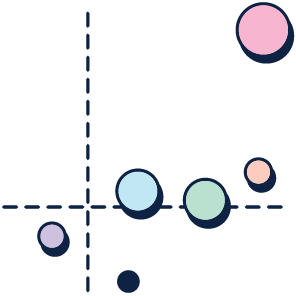Breaking down the differences between media mix modeling and marketing mix modeling
Marketing is an essential aspect of any business. Many factors contribute to it and, therefore, understanding how to measure its effectiveness is crucial. Two frequently used methods in marketing analysis are Media Mix Modeling and Marketing Mix Modeling. While both methods help businesses understand the usefulness of their marketing efforts, there are some very key differences between them. Here we provide insights into each marketing strategy and the key differences between marketing mix models and media mix models.
Media Mix Modeling
So what is media mix modeling? Media Mix Modeling is a statistical technique that measures the impact of different advertising media on sales. It helps businesses understand the marketing effectiveness of each different advertising channel, such as radio, and how these media channels affect overall sales through a media mix model. Media mixed modeling is typically used by advertisers to optimize the allocation of their advertising budget across each marketing campaign.
Mixed media modelling uses sales data and historical data on spend from advertising and sales to build a model that predicts the impact of different media on their results. This model can then be used to simulate different media mix scenarios and determine the optimal mix for any given marketing budget. MMM is typically performed at the brand level and it is often used to compare the effectiveness of different channels for a brand.
Marketing Mix Modeling
MMM Marketing Mix Modeling is a similar technique to Media Mix Modelling in that it measures the impact of a mix of different marketing elements on sales. The typical marketing mix includes the Four Ps: Product, Price, Place, and Promotion. These four Ps of marketing are key factors in marketing a product or service. Marketing Mix Modeling is used to understand how different marketing activities like seasonality, promotions, and distribution, contribute to sales.
Like MMM, Marketing Mix Modeling uses the data on marketing spend and sales to build a marketing mix model that will predict the impact of different marketing elements on sales. This model can then be used to simulate different scenarios and determine the optimal marketing mix for a given budget. Unlike MMM, which is performed at the brand level, Marketing Mix Modeling is typically performed at the category or market level and can compare the effectiveness of a range of marketing elements for particular categories or marketing channels.
Key Differences
The key difference between Media Mix Modeling and Marketing Mix Modeling is the scope of the analysis. What is MMM in marketing is it focuses specifically on the impact of different advertising media on sales for a brand, while Market Mix Modeling takes a broader view and looks at the impact of the entire marketing mix elements on the different marketing channels.
The level of analysis output from each method is another key difference. MMM is typically performed at the brand level, while Marketing Mix Modeling is performed at the category level. This means Market Mix Modeling provides a more comprehensive view of the market category, allowing businesses to compare their marketing efforts to the market as a whole, not just to the brand level.
Each of these methods is valuable for businesses looking to understand the impact of their marketing investments. However, the differences between the two methods lie in the scope and level of analysis. Both methods can be used in conjunction with each other to provide a more comprehensive view of the marketing landscape and help businesses make better decisions about marketing strategies that are right for the brand.



